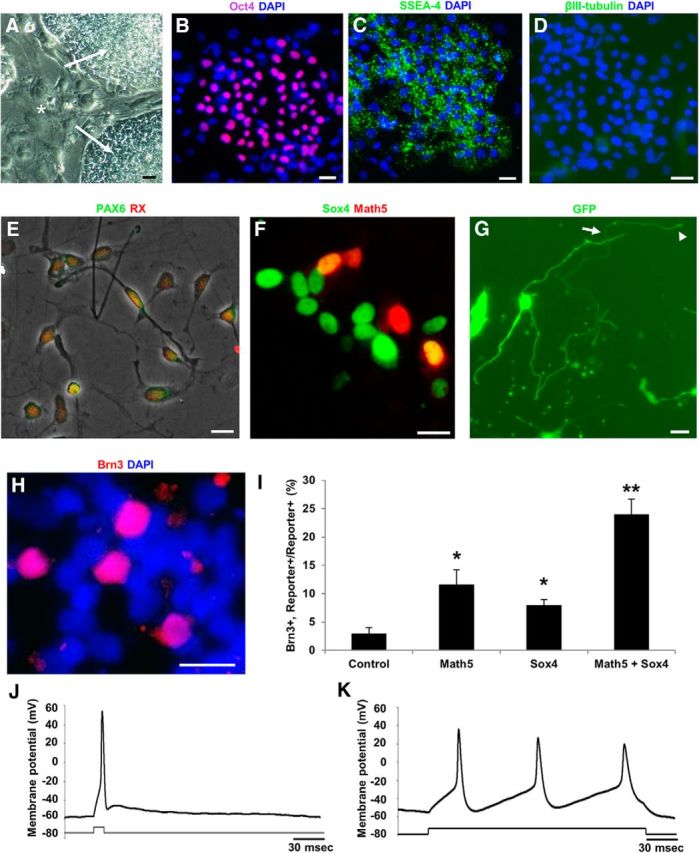Figure 7.

Sox4 promotes human stem cell differentiation into functional RGCs. A–D, Human iPSCs (A, arrows) cultured on eradicated mouse embryonic fibroblast (MEF) feeder layers (A, asterisks) expressed embryonic stem cell markers Oct4 (B) and SSEA-4 (C), but not the neuronal marker βIII-tubulin (D). E, Embryoid bodies dissociated into ≤100 μm aggregates and single cells and plated on PDL and laminin for 24 h showed RPC marker coexpression of Pax6 and Rx. F, During 5 d of differentiation, cells were infected with eGFP (control), Math5-RFP, SOX4-2A-eGFP, or both (example shown in F). G–I, After 5 d, overexpression of SOX4-GFP (G) potentiated RGC morphologic differentiation including long neurites (arrow) with growth cones (arrowhead), and (H and I) increased expression of the RGC marker Brn3. Math5 and Sox4 co-overexpression in human iPSCs together synergized in potentiating RGC-like differentiation (*p < 0.05 from control; **p < 0.01 from control, Math5-alone, and Sox4-alone conditions; N = 3, ANOVA with post hoc Dunnett's test, mean ± SEM shown). J, K, RGC-like progeny generated (J) single and (K) multiple burst action potentials with properties similar to those of purified primary rodent RGCs. Scale bars, 30 μm.
